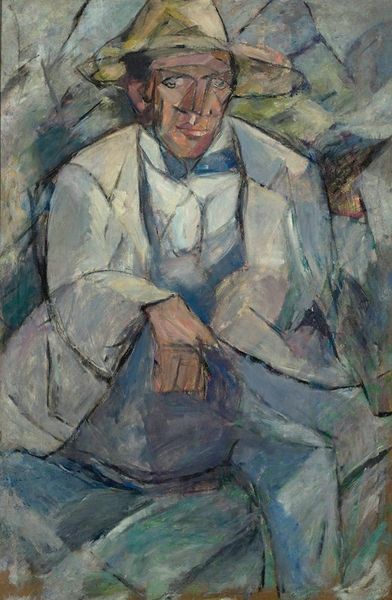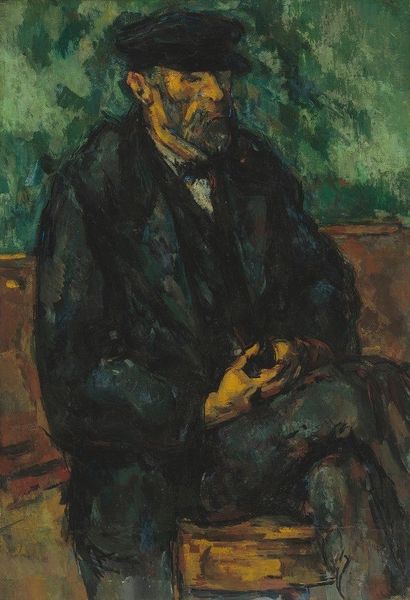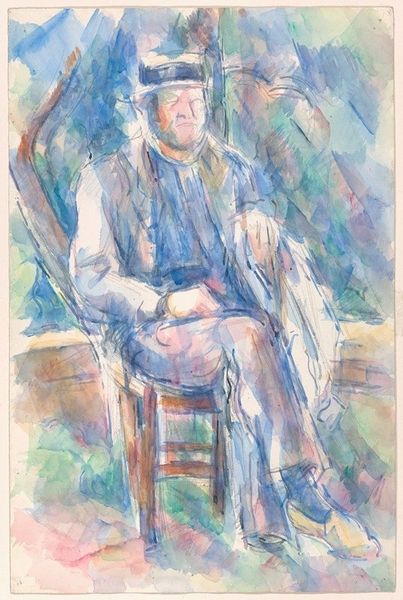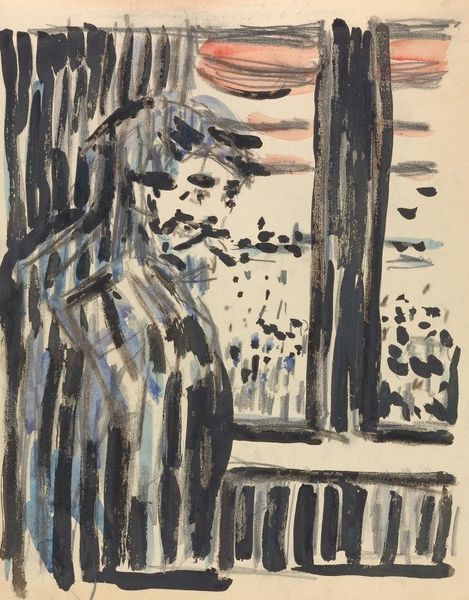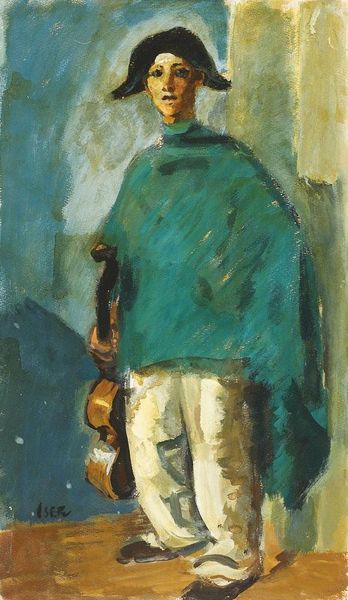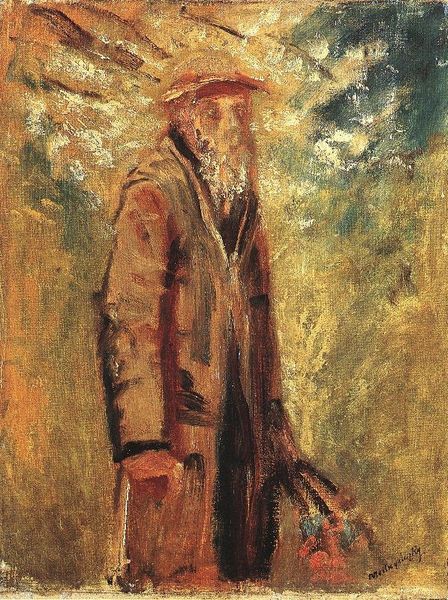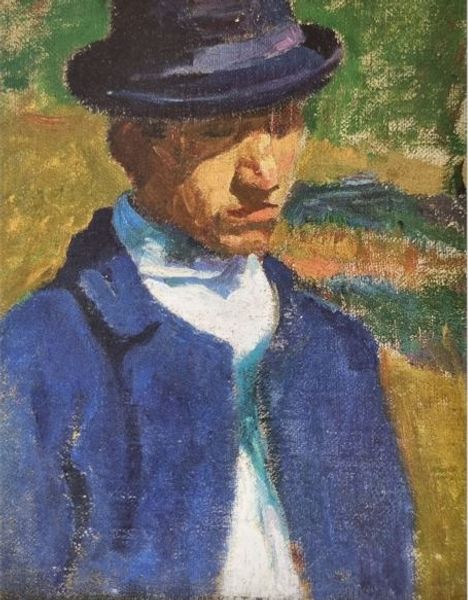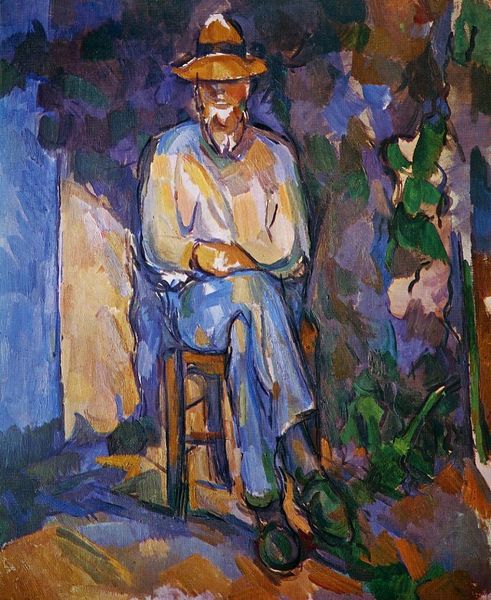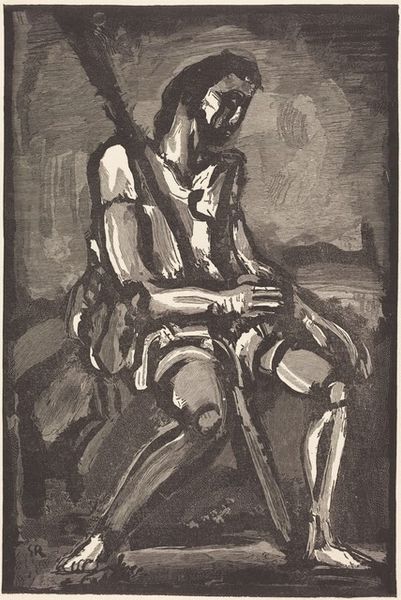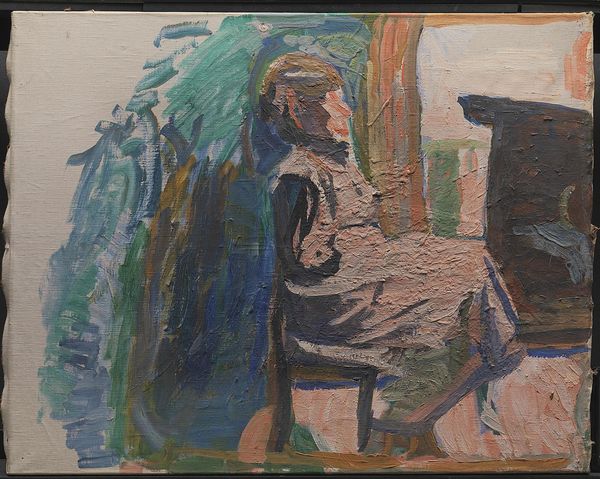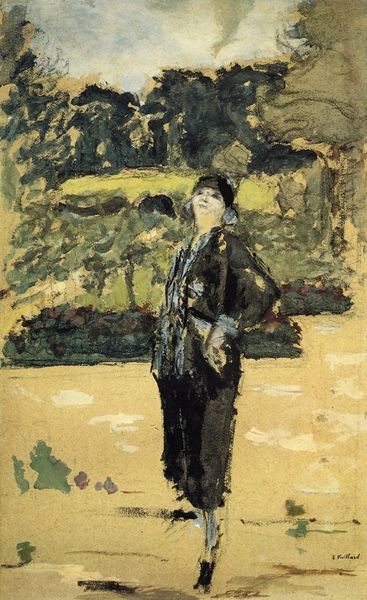
painting, oil-paint
#
portrait
#
figurative
#
painting
#
oil-paint
#
figuration
#
oil painting
#
post-impressionism
Copyright: Public Domain: Artvee
Curator: This is Paul Cézanne’s "Portrait of a Peasant," likely painted between 1905 and 1906. It's oil on canvas, a late work. Editor: I'm immediately struck by the color—that pervasive blue-grey tonality. It gives a sense of somber contemplation, almost a melancholic stillness. And the form seems just barely contained, ready to dissolve. Curator: Cézanne, of course, was deeply invested in form, even as he appeared to fracture it. Think of his persistent use of short, directional brushstrokes. How do they operate here, defining the peasant's shape and weight? Editor: The brushstrokes feel less about outlining and more about building the subject out of pure pigment. They remind me how social realities impact Cézanne’s construction of working-class identity, as there were often anxieties over France’s shifting socio-economic status. The facelessness reinforces that to me. Curator: Precisely, look how his hands are treated almost identically with the facial area – undefined masses. And how color contributes to this instability—that shifting between the planes—denies the conventional illusion of three-dimensionality, almost pushing the figure towards abstraction. Editor: Right, it feels unstable. The seated figure—who clearly toils outdoors– seems simultaneously present and disappearing. Was this portrait, as well as other Post-Impressionist works depicting peasant life, displayed at galleries as part of an intentional class dialogue in France at the turn of the century? Curator: That’s the fascinating tension here. On the one hand, you have a recognizable figure, situated in an accessible posture and form. However, on the other, we see how the rigorous application of painterly techniques transforms and obscures—allowing, finally, for something perhaps beyond the peasant, beyond portraiture even. It suggests an idea of form and color that is more concerned with essence rather than specifics. Editor: Ultimately, the portrait offers us a look at how both structure and symbolism create more nuanced views on reality. This work invites reflection not just on the subject, but how art historical contexts contribute to these kinds of complex representation. Curator: Indeed, seeing and considering, the fundamentals for understanding our engagement with works of art such as this one.
Comments
No comments
Be the first to comment and join the conversation on the ultimate creative platform.
